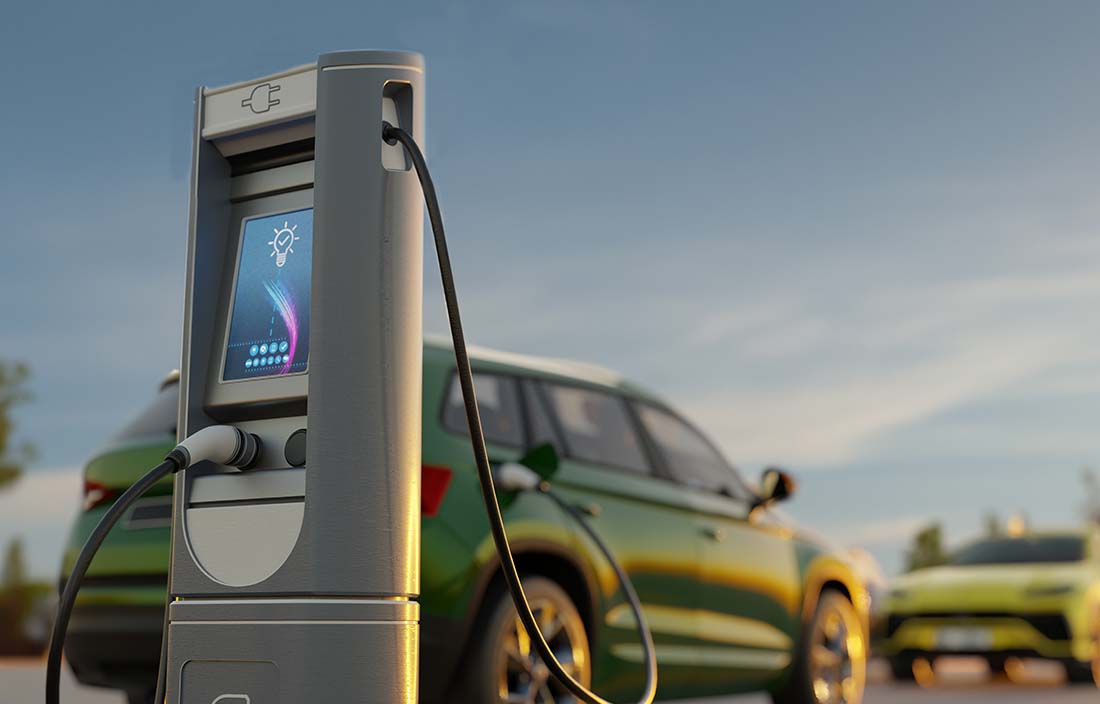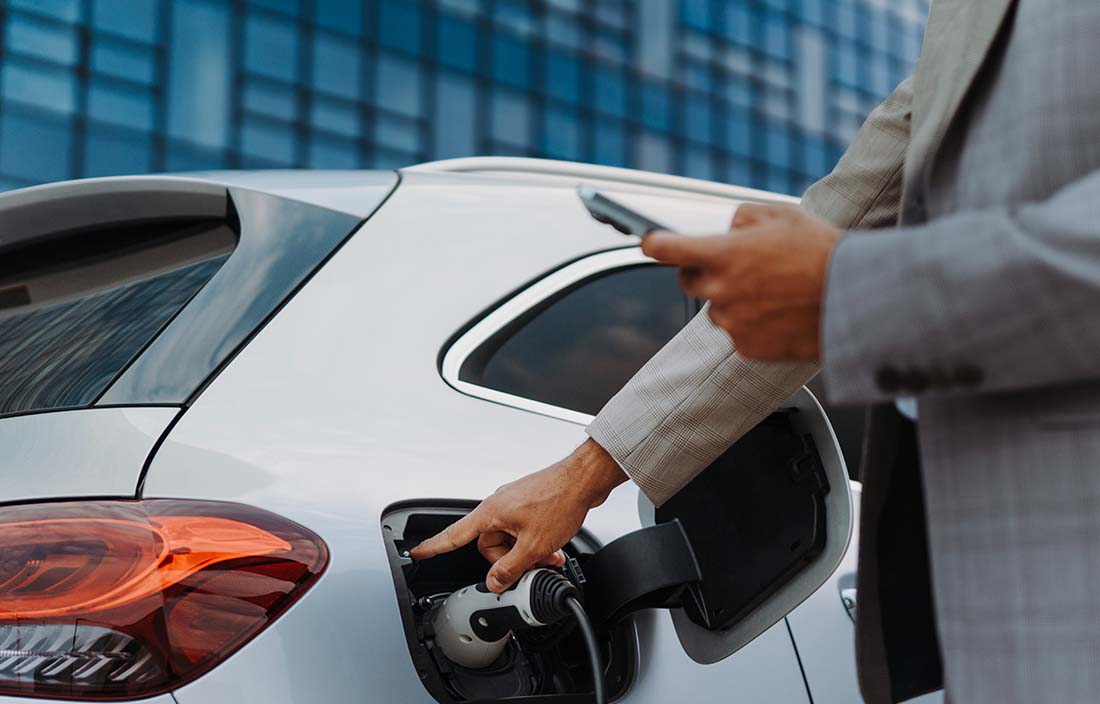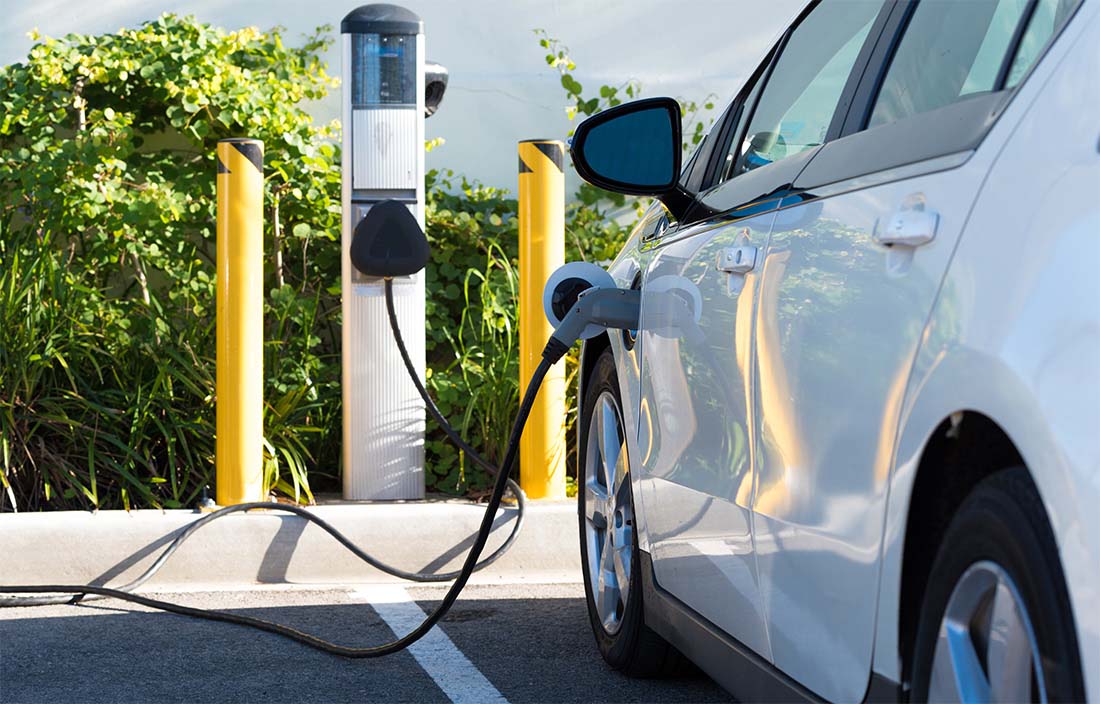Financing EV capital projects: Inflation Reduction Act tax credits, grants, & loans
 The North American automotive industry is undergoing a transformative shift as it steers toward a sustainable future with electric vehicles (EVs). As the transition reshapes the industry, it’s driving OEMs’ and suppliers’ need for significant funds to finance capital projects, including initiatives to:
The North American automotive industry is undergoing a transformative shift as it steers toward a sustainable future with electric vehicles (EVs). As the transition reshapes the industry, it’s driving OEMs’ and suppliers’ need for significant funds to finance capital projects, including initiatives to:- Build and retool manufacturing facilities, scale production, and improve economies of scale in manufacturing processes.
- Create and onshore the battery supply chain in North America, from mining and material processing to recycling and reuse.
- Develop charging network infrastructure.
- Innovate through EV technology research and development (R&D).
In addition to conventional debt and equity funding mechanisms to propel the EV transformation, businesses can leverage several additional sources of capital. These include state and local incentives as well as expanded and new tax credits and government grant and loan programs established by the Inflation Reduction Act of 2022 (IRA) and the Infrastructure Investment and Jobs Act of 2021 (Infrastructure Act) — also commonly referred to as the Bipartisan Infrastructure Law.
While the IRA and Infrastructure Act allocated about $1 trillion across programs, many automotive businesses don’t realize they’re eligible — or don’t employ the internal resources to fully understand the landscape of tax credits, federal loan programs, federal grant, and state and local opportunities and the potential benefits, including monetization. Among the many programs, the following overview highlights options of particular relevance for U.S. OEMs and suppliers.
While the IRA and Infrastructure Act allocated about $1 trillion across programs, many automotive businesses don’t realize they’re eligible.
IRA tax credits
The IRA created a combination of 10 new and 12 modified tax credits and incentives to support the resurgence of the U.S. renewable energy supply chain, create clean energy jobs, reduce emissions in the energy and transportation industries, and generate consumer energy savings. We consider the following credits as key opportunities for suppliers and OEMs to help fund their capital growth projects and sustainability efforts as they support the EV transition.
The Section 45X tax credit: Advanced Manufacturing Production Credit
The tax credit under Sec. 45X incentivizes U.S.-based production and sale (after Dec. 31, 2022, and before Jan. 1, 2030) of certain eligible components, including inverters, qualifying battery components, and related critical minerals. The credit for battery cells is $35 per kilowatt hour (kWh) capacity of the cell; the credit for battery modules is $10 per kWh of battery module capacity. Component manufacturers can receive up to $45 per kWh of battery module capacity for modules with no battery cells. Furthermore, the credit for production battery-critical minerals is equal to 10% of the value-added cost of production.
The Sec. 45X tax credit incentivizes key items for the EV supply chain and thereby acts as a catalyst for many other IRA tax credits. For example, the inverter production credit under Sec. 45X also applies to electricity production credits under Secs. 45 and 48 (as well as 45Y and 48E). Our article on the 45X tax credit explains further.
The Sec. 45X tax credit incentivizes key items for the EV supply chain and thereby acts as a catalyst for many other IRA tax credits.
Section 45 tax credit: Production Tax Credit for Electricity from Renewables
This credit incentivizes energy facilities that generate electricity or place electricity on the grid using certain renewable sources. This creates an opportunity for OEMs and suppliers to benefit from initiatives that reduce their environmental impact and increase their sustainability efforts. The base credit is 0.3 cents/kWh, with a 1.5 cent/kWh increase if output falls under 1 megawatt (mW) or if the project meets prevailing wage and apprenticeship hour requirements. The credit amount may be increased by increments of 10% if the project is located in an energy community or if domestic content requirements relating to the source of equipment are satisfied.
Section 48 tax credit: Investment Tax Credit for Energy Property
This credit applies to the installation of clean electricity or energy storage equipment, including:
- A qualified fuel cell property or microturbine property.
- Geothermal or solar equipment.
- Combined heat and power property.
- Energy storage technology, and more.
The credit is calculated as a percentage of the basis of eligible property placed in service during the year (after Dec. 31, 2022). The base credit is 6% of the basis, with an increase to 30% of basis if under 1 mW of output or the project meets prevailing wage and apprenticeship hour requirements. Similar to Sec. 45, the credit percentage may be increased by increments of 10% if the project is located in an energy community or domestic content requirements are satisfied. Additional bonus credits may be available if the project is part of a qualified low-income economic benefit program.
Section 48C tax credit: Advanced Energy Project Credit
This expanded credit covers clean energy manufacturing and recycling projects to reequip, expand, or establish a facility for production or recycling of:
- Fuels cells, microturbines, or energy storage systems.
- Electric, fuel cell, or hybrid vehicles and components.
- Critical materials, and more.
Submission of a concept paper through a process administered by the U.S. Department of Energy (DOE) is required prior to application. Chosen projects receive a 6% base credit, with up to 30% possible. The first round of credits — about $4 billion — have been awarded, with an additional round expected in mid to late 2024.
Monetizing IRA tax credits and tax credit transferability
Subject to certain limitations, businesses can monetize the IRA tax credits using four key strategies:
- Direct benefit. Businesses with sufficient federal income tax liabilities may utilize the credits under the general business credit rules of Sec. 38. Excess credits are eligible to be carried back three years and then carried forward for 20 years.
- Transferred. Some credits are eligible to be sold for cash to unrelated taxpayers under Sec. 6418. These rules may offer attractive liquidity but will often involve a market discount in addition to buyer due diligence.
- Elective or direct payment under Sec. 6417. Of the credits discussed here, only 45X and 48C have a “direct pay” option for commercial businesses. Direct pay allows businesses claiming such credits to receive cash refunds from the IRS but may only be utilized for a period of five years.
- Tax equity partnerships. Private equity firms, financial institutions, or others may provide upfront funds for new capital projects in exchange for all or some rights to allocations of future tax credits.
IRA and Infrastructure Act loan and grant programs
The IRA and Infrastructure Act have directed a significant amount of capital to the existing loan programs administered by the DOE. They have also created new federal grant opportunities through the DOE’s Office of Manufacturing & Energy Supply Chains (MESC) and Office of Energy Efficiency and Renewable Energy (EERE). These opportunities focus on funding the development of advanced technologies in the U.S. energy and EV supply chains. These programs emphasize the development of the U.S li-ion battery value chain across multiple segments, including: critical mineral & raw material production; critical mineral processing; li-ion battery component manufacturing; battery cell and module production; and battery end-of-life recycling and reuse; as well as the conversion of existing internal combustion vehicle and component facilities to support the production of alternative energy vehicles (hybrids, plugin hybrids, battery electric, and fuel cell).
It's important to note that the grant environment is very dynamic, with new Funding Opportunity Announcements being issued sporadically, often with aggressive and short-term qualifying deadlines. This is further complicated by the fact that funding offers are originating from a vast number of departments within the DOE, each with different objectives and requirements.
Advanced technologies loan programs
Advanced Technology Vehicles Manufacturing (ATVM) Loan Program
There’s $40 billion allocated to the ATVM loan program. These direct loans, administered by the DOE, are intended for production of vehicles — automobiles as well as medium- and heavy-duty vehicles and other forms of transportation — or components that provide a 25% improvement over 2005 CAFE standards.
Loans for between 50 and 80% of the full project cost are made directly from the U.S. Treasury Federal Financing Bank (FFB) at the 10-year Treasury rate, allowing applicant the ability to finance these projects:
ATVM Automotive Manufacturing Conversion Projects
Additional loan funding of $10 billion was made available in August 2023 for ATVM Automotive Manufacturing Conversion Projects, focused on converting existing factories for EV production — retooling; modernizing or expanding facilities; building new facilities; and/or U.S.-based engineering integration related to EV production.
Title 17 loans: Clean Energy Financing Loan Program
Another $300 billion has been allocated to the ATVM loan program. Title 17 provides loan guarantees to support clean energy deployment and energy infrastructure reinvestment in the United States in four designated areas: innovative energy, innovative supply chain, state energy financing institution-supported, and energy infrastructure reinvestment.
Of the $300 billion allocated, $29 billion has been awarded or committed so far. Eligible projects must be commercially ready, among other requirements.
Loans are provided through the FFB and backed by full DOE guarantees, with interest calculated from the U.S. Treasury curve, plus a liquidity spread equal to 0.375%, plus a risk-based charge.
Advanced technologies grant programs
Office of Manufacturing & Energy Supply Chains (MESC) Domestic Manufacturing Conversion grants
Under Sec. 40207 of the Infrastructure Act, $7 billion has been allocated for battery materials and processing. These five-year investments are made for up to 50% of full project cost in targeted supply chain segments: raw material production, materials processing, component manufacturing, battery cell and pack manufacturing, and end-of-life.
Additionally, IRA Sec. 50143 appropriated $2 billion for grants to support domestic production of efficient hybrid, plug-in electric hybrid, plug-in electric drive, and hydrogen fuel cell EVs and components. Applications must be for the conversion of internal combustion engine-related vehicle assembly or component manufacturing.
Grants cover more than 50% of full project cost, and applicants must submit a concept paper prior to applying. Timing of the next funding round is to be determined.
Office of Energy Efficiency and Renewable Energy (EERE) Electric Drive Vehicle Battery Recycling and Second Life Applications
Established under Sec. 40208 of the Infrastructure Act, this grant program supports end-of-life recycling and reuse, including establishing domestic demonstration projects and projects to improve battery recycling economics. Two rounds have been completed, with one to two more expected. Grants cover 20–50% of full project costs.
State and local incentives and EV industry site selection
In addition to the federal incentive opportunities identified above, state and local (municipal/county/etc.,) agencies also offer incentives associated with growth projects. These opportunities could include:
- Property and/or income tax abatements
- Job/Investment tax credits
- Grants, to be utilized toward a targeted/specific need
- Workforce assistance
- Road or infrastructure improvements
- Low-interest loans
- Sales & use tax exemptions
When determining your site selection and real estate strategy, it’s imperative that you maintain competitiveness with multiple locations until all agreements are finalized. Many available programs will be predicated on a project’s investment amount and the total potential full-time positions it intends to hire. However, some states across the United States have targeted the EV industry as a critical target for its economy and may offer more lucrative offers to attract these businesses. It’s important to understand that many states maintain discretionary programs that are awarded based upon need of a project.
Private and self-funding options for capital investment
When raising capital, remember: no federal loan or grant program will cover the full project cost. On average, awards are made for up to about 50%. Businesses should consider a funding strategy that pursues multiple pathways, including equity raises, debt funding and optimizing internal cash flow via supply chain, and operations improvements to help fund capital growth projects.
In short, seize opportunities
OEMs and suppliers will want to focus on identifying opportunities, determining project eligibility, and, crucially, assessing readiness to submit the application, in addition to understanding tax implications and monetization strategies. Oftentimes, applications fail simply because they are premature or incomplete, not due to ineligibility.
Funding is a complex, competitive, and intensive process. To be effective, an overarching business strategy and extensive business plan detailing the following elements all contribute to successful funding efforts:
- Financial viability
- Commercial readiness
- Project scoping and benchmarking
- Addressable market analyses
- Community benefits
- Certification
OEMs and suppliers need to dedicate ample time and resources to define your funding strategy and investigate programs and develop required documentation as you work to secure capital for a sustainable EV future.




